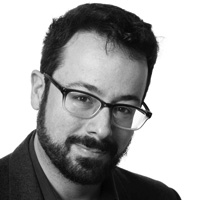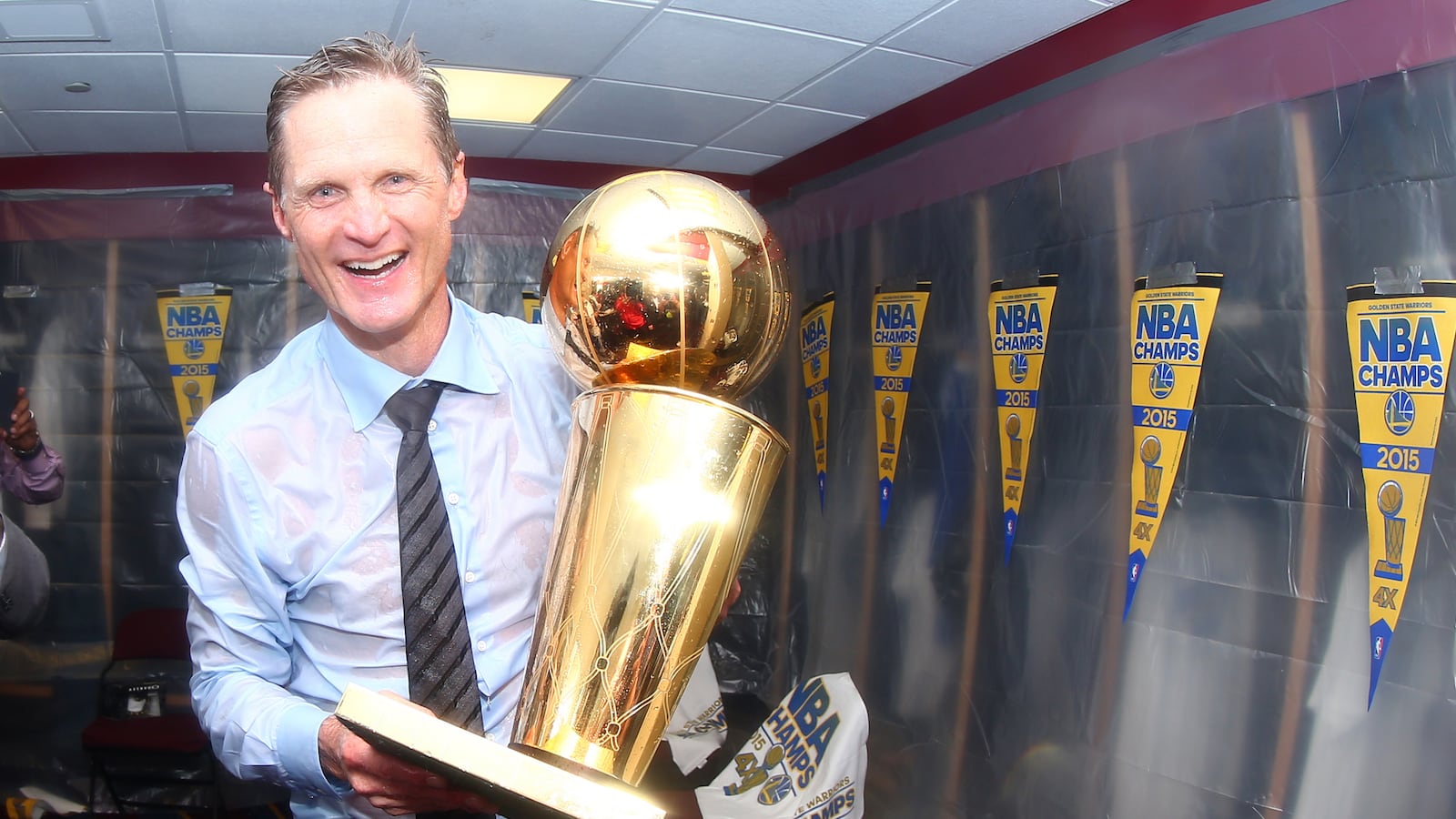Imagine walking into the office one morning to find someone else sitting at your computer, doing your job.
How would you react? You’d probably storm into the boss’s office or you’d quietly gibber and seethe. At least, you would unless your boss happened to be Steve Kerr, the head coach of the 2015 NBA champion Golden State Warriors, and you were Andre Iguodala, this year’s Most Valuable Player.
Before the start of the season, Iguodala found himself summarily exiled to the bench for the first time in his 10-year career, a decision that could easily have fractured the locker room, sending the season spinning out of control before it even started.
“I don’t think he was thrilled, but he understood my reasoning,” Kerr told ESPN’s Baxter Holmes. “I explained what I was thinking, and to his credit, he accepted it immediately. I thought it set a tone for our team from the beginning, a sacrifice.”
It worked like a charm, as the Warriors raced out to a 21-2 start on the way to a dominant 67-win season, possibly the finest non-Michael Jordan squad in the last 38 years.
But after three games of the finals, the Warriors found themselves down 2-1. Their perfectly calibrated machine—the beauteous swirl of threes, perpetual off-the-ball action, and Tika Taka-like pinging of passes around the perimeter—had come tumbling down to earth, felled by the constant, brutal pounding of a LeBron James-size sledgehammer.
So Kerr decided to wipe the blackboard clean, taking All-Defensive Second Team, rim-protecting center Andrew Bogut out of the rotation altogether, and going to an uber-small-ball unit anchored by the 6-6 undersized power forward Draymond Green. He also resuscitated David Lee, like Iguodala, another mothballed, highly paid former All-Star before Game 3, a ploy that kickstarted Steph Curry’s game in the midst of what ended up being a failed comeback effort.
Considering the stakes, this was a downright radical move on Kerr’s part, and one that easily could have blown up in his face.
Iguodala wasn’t able to shut down LeBron, but he clung to him like a multi-limbed, frenetic, tireless cheap suit, allowing the Warriors to resist the temptation to send extra defenders his way. James still averaged a whopping 36 points, 13 rebounds, and 8.3 assists in 46 minutes per game, but over the course of the series, with Iguodala on the court, LeBron shot 38 percent and the Cavs were -55. When he sat, LeBron shot 44 percent and the Cavs were +30.
He wasn’t just a LeBron stopper in the Warriors' three series-ending wins
Iguodala put forth a 20-7-4 line with only one total turnover, nailed countless clutch threes, and often served as the primary pick and roll ball-handler, as the Warriors’ wondrous offensive machine slowly but surely roared back to life.
Amazingly enough, the idea came not from Kerr, but rather from Nick U’Ren, a 28-year-old assistant, who had been scouring game film from last year’s Finals and “noticed that the Spurs swung their series against the Heat by plugging small forward Boris Diaw into the starting lineup. U’Ren called [Assistant Coach Luke] Walton and suggested doing the same with Iguodala. At 3 a.m., they texted Kerr, and the staff reached a consensus over breakfast.”
“He’s behind the bench, he’s 28 years old, he’s a kid,” Kerr explained to Yahoo Sports’ Marc J. Spears. “We have a staff that is very cooperative. Whoever has the idea, it doesn’t matter. And he brought me the idea.”
Outside of Gregg Popovich’s Spurs, this just doesn’t happen. Video assistants don’t get to pitch the man in charge, let alone get the credit, and the vast majority of head coaches are far too small-c conservative and risk-averse to even contemplate such a move, let alone admit that he lied about it.
Therein lies the key to Kerr’s genius, one that’s antithetical to a coaching world that’s dominated by dogmatic, often borderline-deranged workaholics LARP-ing Curtis LeMay. Think Tom Thibodeau, so singularly possessed that he made a group of Little Leaguers sit and stew so he could practice tossing out a first pitch till his khakis were totally soaked. Not to say that he’s any less demanding or exacting, but that’s just not Steve Kerr.
“Kerr hikes Sibley Volcanic Regional Preserve in Oakland,” Lee Jenkins wrote at Sports Illustrated. “He surfs Pipes Beach in San Diego. He grills carne asada for his daughter, Maddy, and her volleyball teammates at Cal. He is kind of a foodie but hardly a snob. For a week every summer he flies to a buddy’s ranch in Baja California and stays in cheap motels near Scorpion Bay. Or he throws up a tent on the sand. ‘What’s your ZFL level?’ you can ask him, and he’ll reply with a smile, ‘Pretty high.’ ZFL is one of his pet acronyms: Zest for Life.”
Kerr demanded that they have fun. That in and of itself is revolutionary. More to the point, he was willing to speak to his players not like soldiers or faceless office drones, but like... well, people that he trusted and legitimately liked. That’s why Iguodala bought in early on, and Andrew Bogut and David Lee did the same. He created a system that, as Zach Lowe wrote at Grantland, “makes you believe in the larger spiritual underpinnings of team sports. They are so in tune with each other, and that synchronization guides them on both ends of the floor.”
So when Kerr talks about sacrifice, it’s not just thinly veiled coach-speak for “Do what I say or I’ll ship you off to Buffalo.” Kerr was able to get a group of millionaire athletes, all of whom have been considered stars at one point in their amateur and pro careers, to sacrifice for the collective good because he made them feel that they were part of something great. As Draymond Green described it: “A group that’s tied together, working for each other, and that’s the type of stuff that helps us win.”
This too is why we watch sports. Not just for the feats of unimaginable athletic prowess or a tribalistic desire to enjoy triumph, but because of the rare opportunity to witness an organizing system that isn’t reduced to rubble by human failings, ego, selfishness, greed, laziness, or even random, chaotic glitches.
Even though, yes, we’re talking about a much smaller scale and limited scope, it’s a brief glimpse of a world in which people might be able to truly work together to build something—a government, an economic system, a philosophy—that does elevate everyone involved and leads to a collective good.
That’s fun. Don’t believe me? Just watch Steve Kerr and the rest of the Warriors dance.






